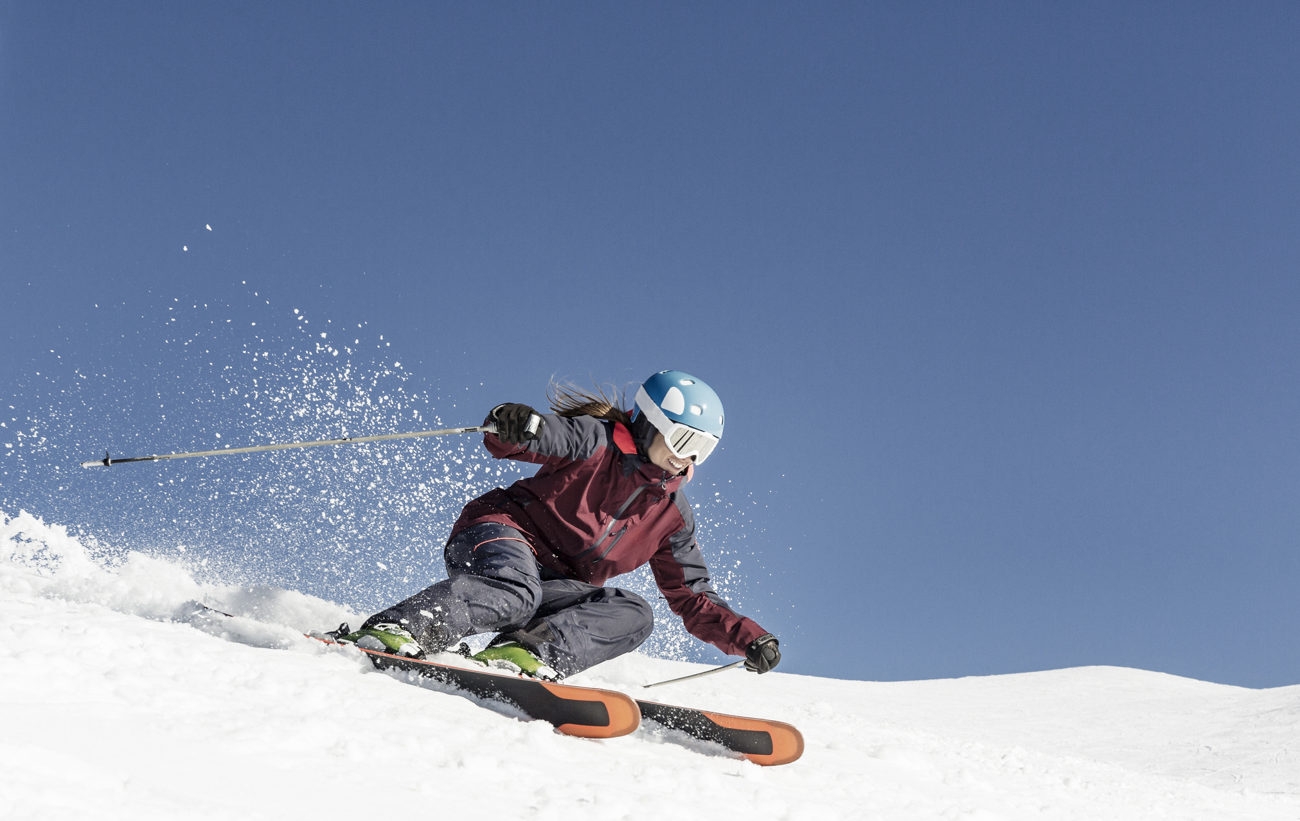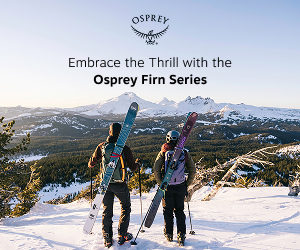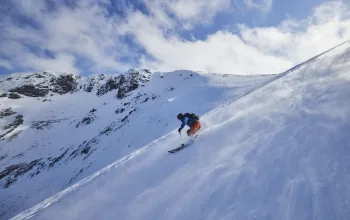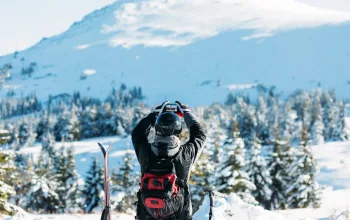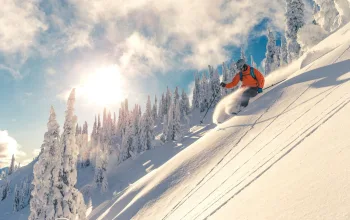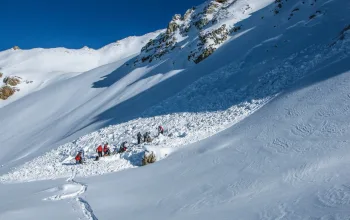When you first learn to ski, you do so without poles. Why is that?
When you’re learning you’re generally travelling at a lower speed so you’re not looking to use pole plants within your turns. You’re simply learning to transfer weight from foot to foot in order to make yourself turn, and to be honest having no poles is just one less thing to think about. When learning you need to concentrate on balancing and not being distracted by elements like the timing of pole plants, until you have progressed and are more confident.
What benefits do poles add then when you’re past the early learning stage?
Poles are an important piece of kit and should act as a third point of contact with the ground in each turn. If you only have your skis on the ground and you have a little wobble there might be a time when only one of your feet is on the ground. By always aiming for a pole plant, the extra point of contact gives you extra stability.
Poles are primarily there for balance, timing and stability.
Just as importantly, your pole plant helps with forwards motion which, in turn, affects the timing of your turns. A correct pole plant initiates rhythm and can set the timing. It’s one little movement that often gets forgotten about, even in racing, and can make a huge difference between intermediate and advanced skiing.”
What should you look for in a ski pole?
Ski pole length
The most important thing is the length of the pole, which should fit the style of skiing you’re into. For freestyle skiing in the park, you want to use a shorter pole that doesn’t catch when you’re jumping and rotating. For racing, especially in speed disciplines, you want a slightly longer than average pole to give you more leverage and allow for tucking.
But for most people who are doing recreational skiing you want a regular length of pole. You can check this by measuring it against your body – your elbow should be at right angles to your body when you hold the pole out in front. If it’s too short then you’ll struggle to get a proper plant, too long and you won’t be able to help yourself move forwards.
Ski pole weight
The second element is weight. A good quality aluminium or carbon pole will flick forwards nicely without too much weight, and won’t drag your hands down. It should allow you to reach forwards easily, without a struggle to move your hands. You can often feel the difference with cheap rental poles, which can feel like a heavy weight, although equally you don’t want anything that’s going to bend and snap under pressure. With poles its always better to go for the quality option.
Ski pole strap
The third thing to look out for is the strap. The strap is important because it allows you to create tension between your wrist and the pole when holding the handle and can minimise your risk of injury when you fall. LEKI’s Trigger S system is fantastic for this - its quick release innovation was cutting edge when it came out ten years ago and it’s still the number one standard for world cup and race skiers because it works so effectively in preventing injury when you fall.
What are the top three ski pole bad habits?
1. Low Hands
Skiers dragging their hands down by the sides is the number one bad habit. It’s just lazy skiing and means that people miss their pole plant. They’re not using their poles effectively and are just carrying around the extra weight. You need to keep your hands out in front like you would on a steering wheel – at 3 o’clock and 9 o’clock. That will help with balance, and then a simple flick of the wrist forwards or backwards can initiate the pole plant, ensuring that everything works together.
2. Exaggeration
The second is exaggeration. You see a lot of people with too much movement and flamboyancy in their arms, flailing their poles around. This is not only a danger to others, but the excess movement releases too much pressure and control and actually makes it harder to ski. It’s like Saturday Night Fever!
3. Straps
The third and final bad habit has got to be not putting ski pole straps on properly. It leads to a loss of tension and means you can’t plant properly when you need to. People just end up injuring themselves when they fall because their thumb gets caught in the strap, or dropping their poles and having to hike back up to collect them because they didn’t have the straps on at all.”
How can I improve how I use my poles, to ultimately improve my skiing?
The best thing you can do is have an instructor film you skiing normally and then take a look at what your hands do, where you’re placing them and how you’re using them to initiate your turns. Most people think that they use poles well but when they watch their video they’re surprised to see they have very little timing.
It’s the rhythm that you need. Go back to an easy blue run where you don’t have to carve and set yourself a rhythm by counting in your head 1…2…1…2…On each beat, plant the pole.
Reach forwards and give a strong plant near to the tip of your ski
Practising on an easy slope means you won’t be going too fast, so you won’t worry about anything else – instead just focus on your pole plants. You’ll find that you’re able to move towards the front of your boots, you’ll become more nimble and have more control.
Next start to increase your speed with more open carved turns, or head over to a steeper or mogul run. Mogul skiers are some of the best skiers in the world for pole planting. Watch how their upper bodies stay completely still and their pole plants will be ‘bang…bang…bang…’ in rhythm. Try to transition towards a bumpy run where you can practise this timing, but now with the slope dictating the rhythm rather than your own timing.
Pole planting, as with a lot of movement patterns in skiing, is a habit and is something that requires practice. You’ll start to notice how the better skiers are very good at it. So if you want to improve your skiing, start with your pole plants, get them stronger – they’ll help you to move into the front of your boot and flex your ankle each turn, and as you begin to dictate the turn shape you want, you’ll find the extra stability helps to give you an increased confidence. It’s a very important aspect of advanced skiing.
Paul Telling is Head Coach with Team Evolution. He is currently looking after the British Junior ski team who are sponsored by LEKI. Paul uses LEKI’s Venom SL Pole.


